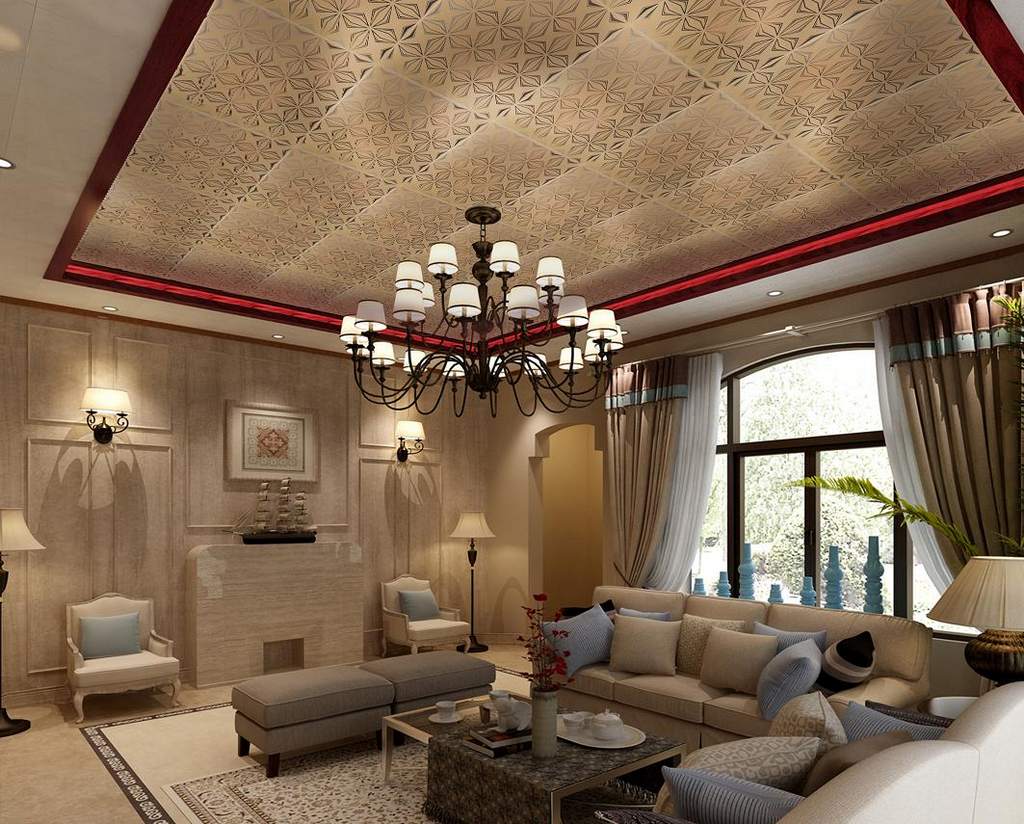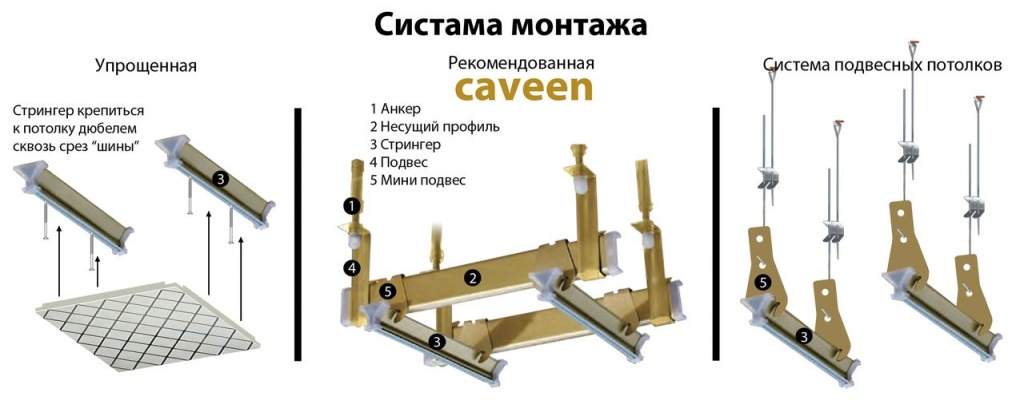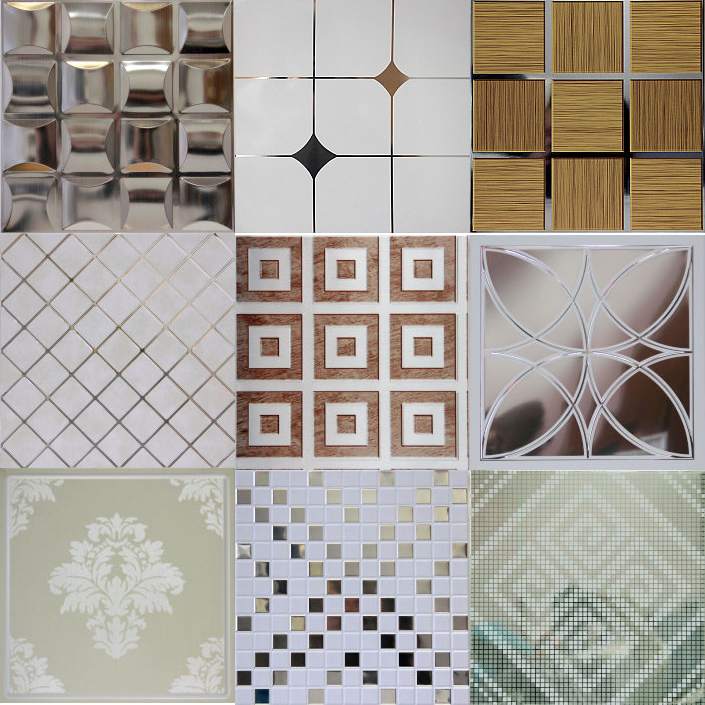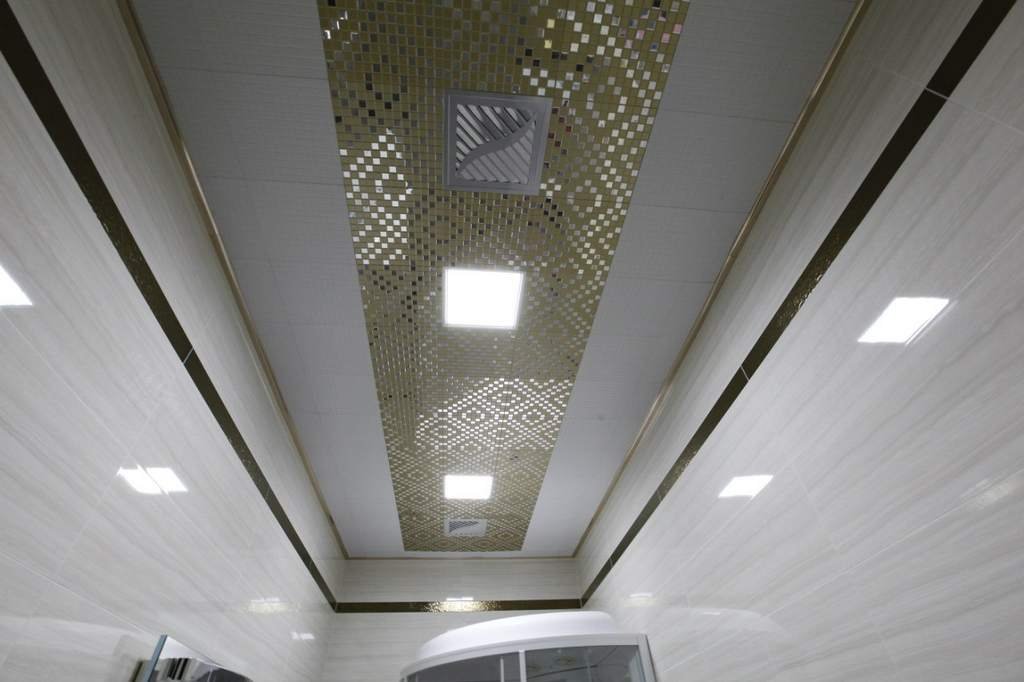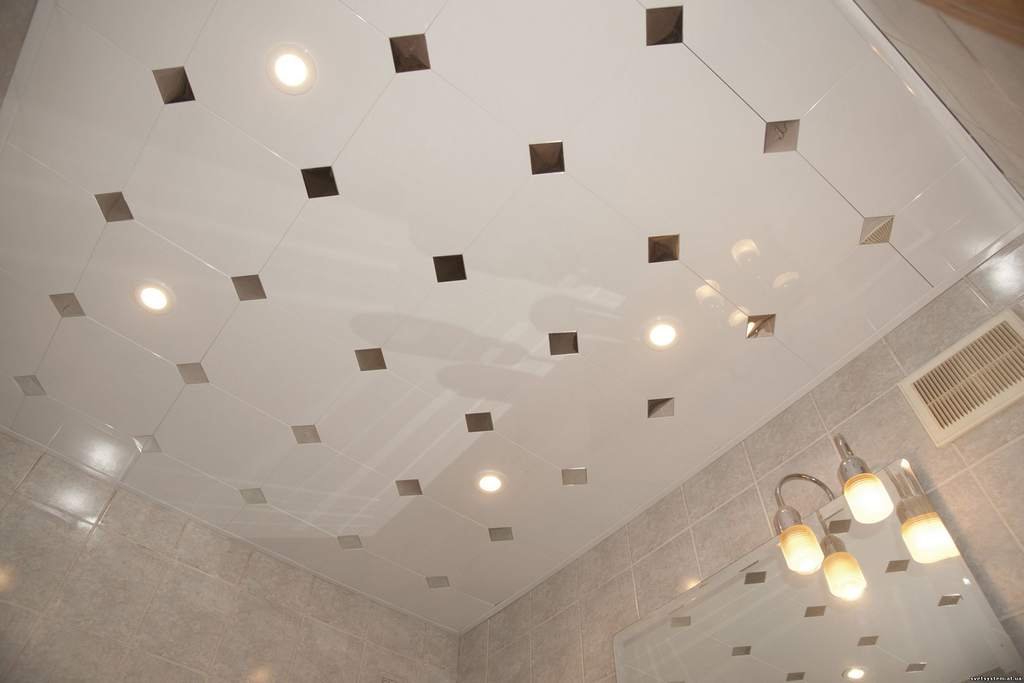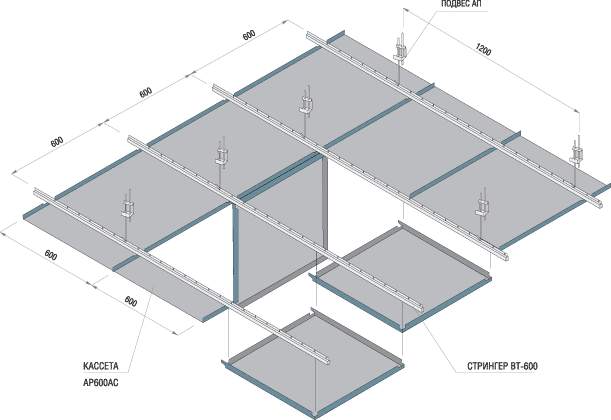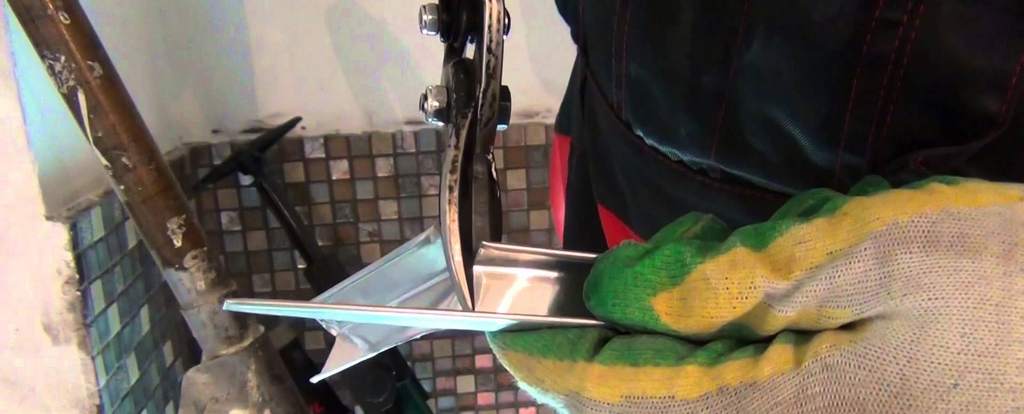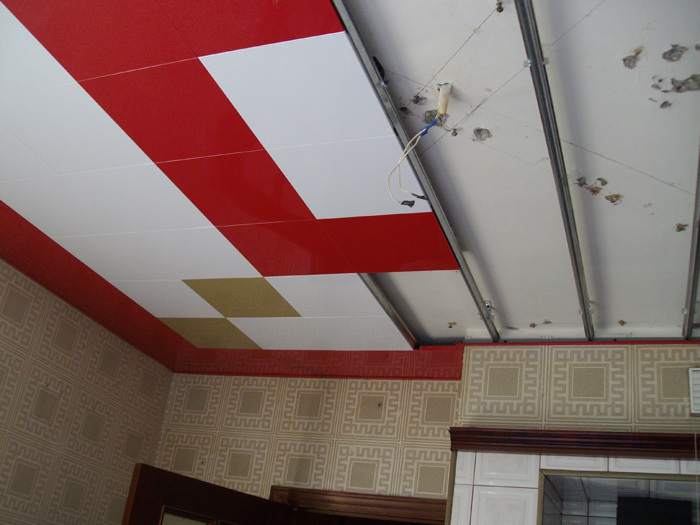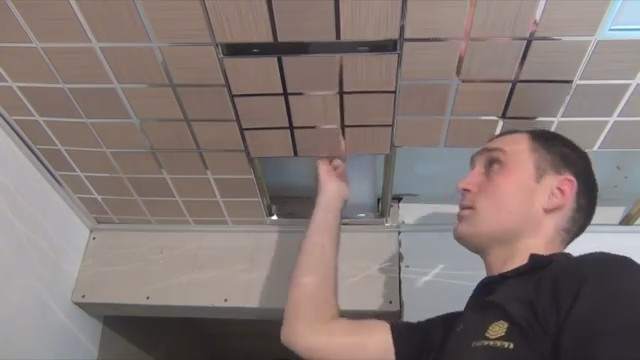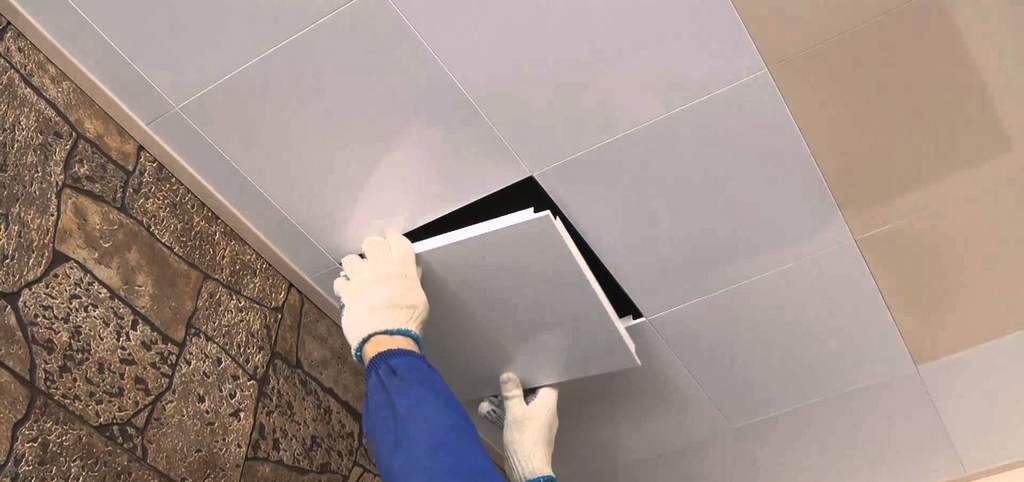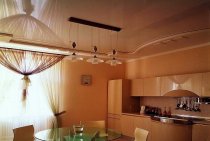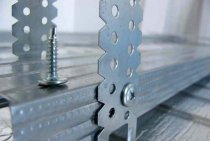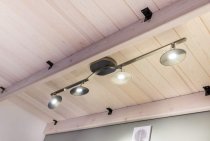There is an erroneous opinion that some types of suspended ceilings, such as cassette ceilings, are intended for installation only in office or industrial premises. Those who think so are just a little behind the times. In fact, the cassette ceiling looks very organic in the apartment, and not only in the hallway, in the kitchen, in the bathroom, but also in the living room. Unpretentiousness in care, simple installation and a growing variety of textures and colors of panels make cassette ceilings incredibly attractive. Why not apply this new and non-standard solution at home?
What are cassette ceilings?
A cassette ceiling is a structure consisting of guide profiles and decorative modules, or so-called cassettes. In some cases, it additionally includes carrier profiles. Such a ceiling is sometimes confused with false ceiling "Armstrong", although in fact their differences are quite fundamental.
Guides made of steel or aluminum are attached in two ways:
- Directly to the ceiling with special suspensions.
- With the help of mini-suspensions to the supporting profiles, previously firmly fixed to the ceiling base.
The most common ceiling options with square or rectangular cassettes (30 X 30 and 30 X 60 cm). The height of the suspension system - the distance from the base plate to the ceiling surface - is at least 8 cm.
Aluminum is an ideal material for the production of suspended structures. The main advantages are low weight, corrosion resistance (in air, the material is covered with a strong film that prevents oxidation). Aluminum compounds do not emit substances harmful to humans.
The ceiling made of aluminum panels can be decorated in different ways. On the front surface of the cassettes may be present:
- powder layer;
- lamination;
- polymer layers of paints (matte and with a metallic sheen);
- galvanic layer (mirror - with gold and chrome shades).
Advantages and disadvantages
Advantages of aluminum suspension systems:
- Long service life - provided by an anodized or laminated layer on the surface of the panels (an additional protection is created that helps maintain aesthetic appeal for a long time).
- Environmental friendliness - the material does not emit harmful substances.
- Moisture resistance - allows you to install cassette suspended ceilings in rooms with high humidity (kitchen, bathroom) and makes surface maintenance easy.
- Lightness - for the arrangement of a suspended structure, the installation of a solid frame is not required.
- Sound insulation - to increase sound absorption, an acoustic gasket made of a special material is glued to the back of the metal modules.
- The ability to lay wires and communications without violating the design and overall appearance of the premises.
- Ease of installation and dismantling of the system, ease of replacement of individual modules.
- A wide range of design solutions, a rich color palette of modules.
If the surface of the ceiling has a mirror effect, then the space of a small bathroom or kitchen is significantly enlarged visually.
As the only drawback of the design, we can mention a decrease in the height of the room by 8–20 cm.
Aluminum cassette ceiling: types of fasteners and features
Fastening of metal panels on frame rails can be implemented in a visible and hidden way.
- Open-type cassette suspended ceilings include a frame made of special guides, the cross section of which resembles an inverted letter T. During installation, cages are formed that correspond to the dimensions of the metal modules.Then the cassettes are laid over the cells and held by horizontal protrusions on the guide elements. The parts of the guides that remain uncovered also have a decorative coating.
- At the ceiling of a closed type, the modules are fastened to the frame using special grooves on the bearing guide elements. This option involves completely covering the guides with panels and creating the appearance of a solid surface.
The system provides a strong fastening of the modules to the rails. The cassette ceiling is easy to install in any area, from small bathrooms to spacious halls.
What is required to install a suspended cassette ceiling of a closed type?
For the correct installation work on installing the structure in the kitchen, bathroom, corridor or living room, you will need the following components and tools:
- Set of aluminum cassettes. If they have a standard size of 30 X 30 cm, then per 1 sq. m ceiling will need 11, 1 pieces.
- L-profiles, or the so-called wall corners, having a standard length of 3 m and a thickness of 0.4 mm. The number of parts is calculated taking into account the length of the perimeter of the cassette ceiling.
- Guides (stringers) 4 m long, made of galvanized steel. These are important details that guarantee the rigidity of the structure and have special grooves for installing metal cassettes.
- Mini-suspensions are accessories designed for hanging the load-bearing rails from the spring hanger / ceiling / load-bearing profile. Create a space between the ceiling and the suspended structure for the location of communications. Are completed at the rate of at least one piece per square meter.
- Spring hangers - screwed directly to the ceiling and are used if it is necessary to create a large space between the base of the ceiling and the suspended structure. Quantity - from 1 pc. per square meter.
- Level, chopping cord.
- Knife / scissors for metal for cutting the profile.
- Screwdriver, perforator.
- Self-tapping screws, dowels.
The most detailed step-by-step guide to installing a cassette ceiling
You can easily install cassette ceilings with your own hands if you use competent and detailed instructions. So, let's begin.
- Decide on the level of the cassette ceiling and mark the wall around the perimeter of the room. It is most convenient to use a chopping cord for these purposes.
- Measure and cut the L-profile of the required length with special scissors for metal. Attach it to the wall, focusing on the markings, mark the attachment points on the surface with a pencil, the distance between which should be 80 cm. Fix the profile to the wall with dowels and self-tapping screws with a large cap, making holes with a perforator.
To join two profiles in the corner of the room, one of them is cut along the measured diagonal line.
- Installation of guides. Mark the location of the guides on the ceiling: the step between them should correspond to the size of the cassette modules, usually 30 cm.
- Fix spring hangers on the ceiling at a distance of no more than 1 m from each other. Hang the guides on the hangers.
Important! The maximum distance between the base and the cassette ceiling at which mini-suspensions can be used is 10 cm. If it is necessary to lower the suspended structure below, spring hangers are used. The stringer is positioned 5 mm above the L-profile (this margin will be required for the inserted cassette).
- Level all guides by adjusting the spring hangers.
- Proceed to placing the cassettes. If the cassette ceiling involves the use of modules of different textures or colors, which should make up a pattern, focus on the center of the room.Determine the middle of the central rail - from this place you will begin the installation of modular elements. If the cassettes are the same, start from the corner of the room.
Be sure to draw a diagram of the arrangement of modules of different colors according to the intended drawing.
- Just insert the cassettes both sides into the guides. If necessary, you can freely move them.
- If the whole cassette does not fit against the wall, it must be cut to the required size. Cut the edges with the same scissors, bend them, make an incision with a mounting knife and bend the cassette along this line, separating the desired part. Remove the adjacent element, install the cut piece of the metal cassette, clamp it with the clamps on the wall bracket, then return the removed module to its place.
Install lamps the process of installing a suspended ceiling is simple: make a hole in the desired panel with a core drill, fix the cassette on the rails, insert the lighting fixture. Some manufacturers, such as Caveen, produce luminaires that fit the size of a single panel and install in the same way as a regular cassette.
- Lastly, entire cassettes of the penultimate row are mounted, before that, the extreme panels are pressed against the L-profile with clamps. Insert the last cassette carefully and snap it into place by lightly tapping the corners.
In the next video, you can see the installation steps for a cassette ceiling of another model, which involves the use of load-bearing profiles. The only difference is that the guides (stringers) are held with the help of suspensions not on the basis of the ceiling, but on these profiles.
